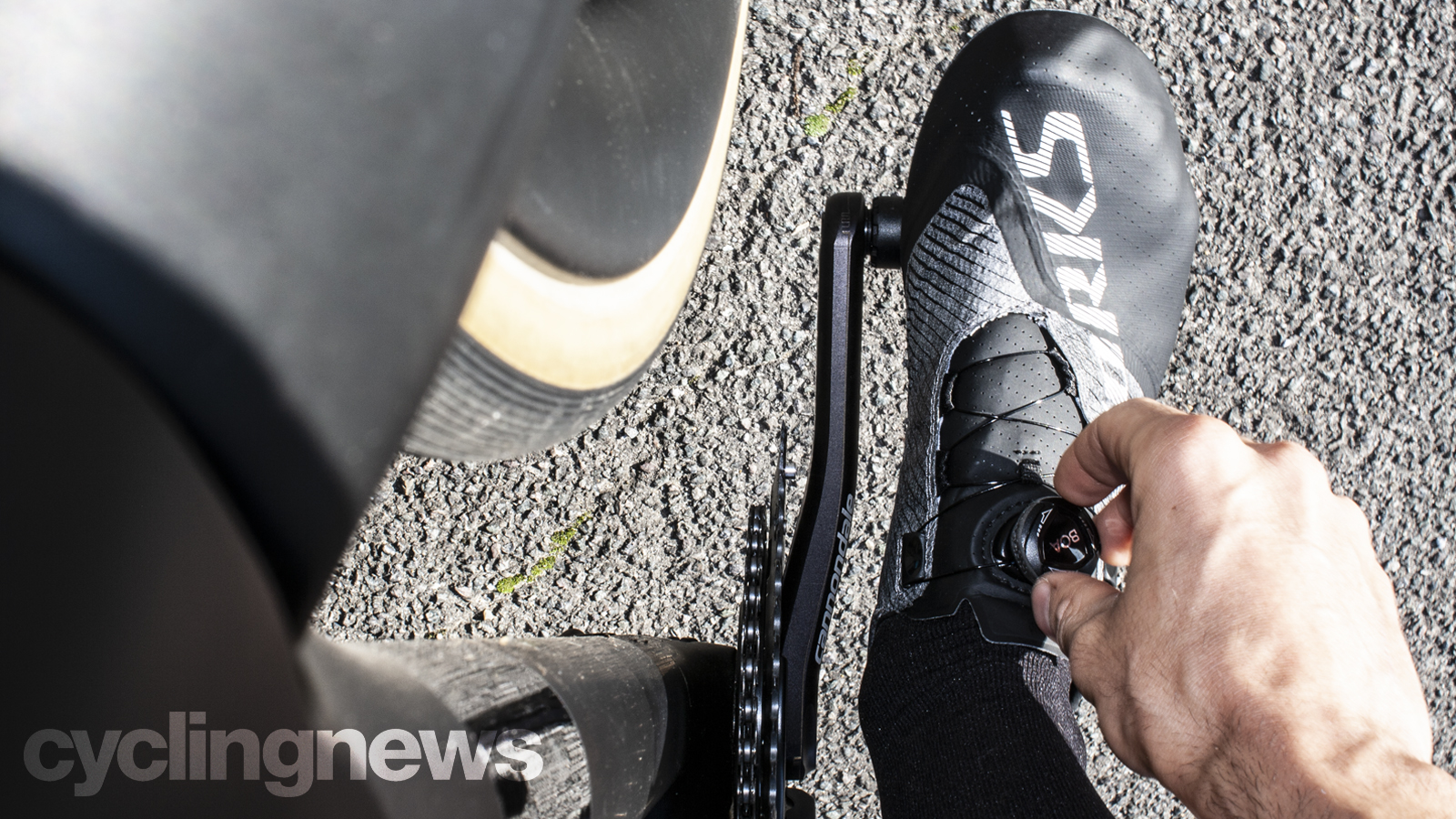Laces, Boa or Velcro? We explore the world of cycling shoe retention
We explore the advantages and disadvantages of the three most popular cycling shoe retention systems

When we think cycling shoes, our thoughts are a sequence of colours, grams and stiffness ratings. Very rarely do we consider the feature that makes a shoe work: its retention system.
Cycling-shoe designers have a very challenging brief. They are required to engineer shoes that are light and stiff, yet also comfortable, weatherproof and ventilated.
If we ignore the issue of sole stiffness and weight, the most important cycling shoe feature is its retention system. Without a quality fastening interface, you'll never have a comfortable fit, and that will mean agonising cramps or many lost watts of efficiency on a long ride.
For decades, the cycling shoe was laced, and with good reason. Laces are a mature design, having evolved over centuries of shoemaking, and they promise to apply fastening tension in a gently distributed way across the top of the shoe. Advances in Velcro technology have seen straps supersede laces and, in 2020, most high-performance cycling shoes feature a Boa-dial retention system.
Despite all the technical innovation with Velcro and Boa dials, laces have made a comeback, especially at the premium price point. Some industry analysts dismiss this as a pure fashion trend event, with no technical benefit.
Are laces better?
Has the resurgence of laces been a case of form over function? Proponents of the new lace movement in cycling shoes believe the traditional retention system has value in terms of ergonomics, comfort and reliability across the entire cycling spectrum – road and gravel included.
Lace-up cycling shoes have a slicker top-side aerodynamic profile than any comparable Velcro-strap or Boa-dial shoe. The aerodynamic drag issues are marginal, but there is little argument against the superior aerodynamic profile.
The latest race content, interviews, features, reviews and expert buying guides, direct to your inbox!
Compare a modern lace-up shoe to other retention system designs, with their protruding retention dials or straps, and you can understand the theoretical aerodynamic benefit that lace-up shoes have – although the advantage remains very minuscule.
Perhaps the most compelling argument for laces as a retention system of choice on your next pair of cycling shoes would be their simplicity.
Laces don’t have the tight tolerances and mechanical complexity of a Boa system, which can clog or break when small contaminants have entered the dial, or when extreme winding pressure is applied. Velcro can also foul up with contaminants and eventually delaminate with hard use.
If lace-up shoes have less aerodynamic drag and superior reliability, why has the industry bothered to develop and market Velcro straps and Boa dials? The reason is that they offer great incentives regarding adjustability and fit.
Why adjustability matters
For riders who seek the snuggest possible fit, to prevent any efficiency loss or foot slippage inside the shoe while pedalling, Velcro straps and Boa dials are unbeatable. The Boa system's wire laces can exert a great deal of pressure on a shoe's material structure, giving you an incredibly snug fit without causing pressure point pain.
Once you are hours into your training session or race, straps and Boa dials have another benefit compared to lace-ups: mid-ride adjustment. If your lace-up cycling shoes have worked a touch loose 50 miles into a ride, you must stop and dismount to retie them.
- Specialized S-Works EXOS shoes review
- Giro Imperial road shoes review
- Rapha Pro Team Powerweave shoes review
- Bontrager XXX road shoes review
With Velcro straps or a Boa shoe, you merely stall your cadence and go into a cruising posture on the bike, before removing a hand from the bars to reach down and adjust your shoe tension. There is no need to stop, unclip, dismount and kneel-down for lace-adjustment.
The lace-up trend appears to be an attempt at retro marketing, triggering a sense of tradition amongst cycling fans, with the promise of modern materials and low weight. Measured in terms of actual retention-system performance, comfort and adjustability, laces struggle to rival a Boa dial system for consolidated cycling shoe performance.
Lance Branquinho is a Namibian born media professional, with 15-years of experience in technology and engineering journalism covering anything with wheels. Being from Namibia, he knows a good gravel road when he sees one, and he has raced some of Africa’s best-known mountain bike stage races, such as Wines2Wales and Berg&Bush.